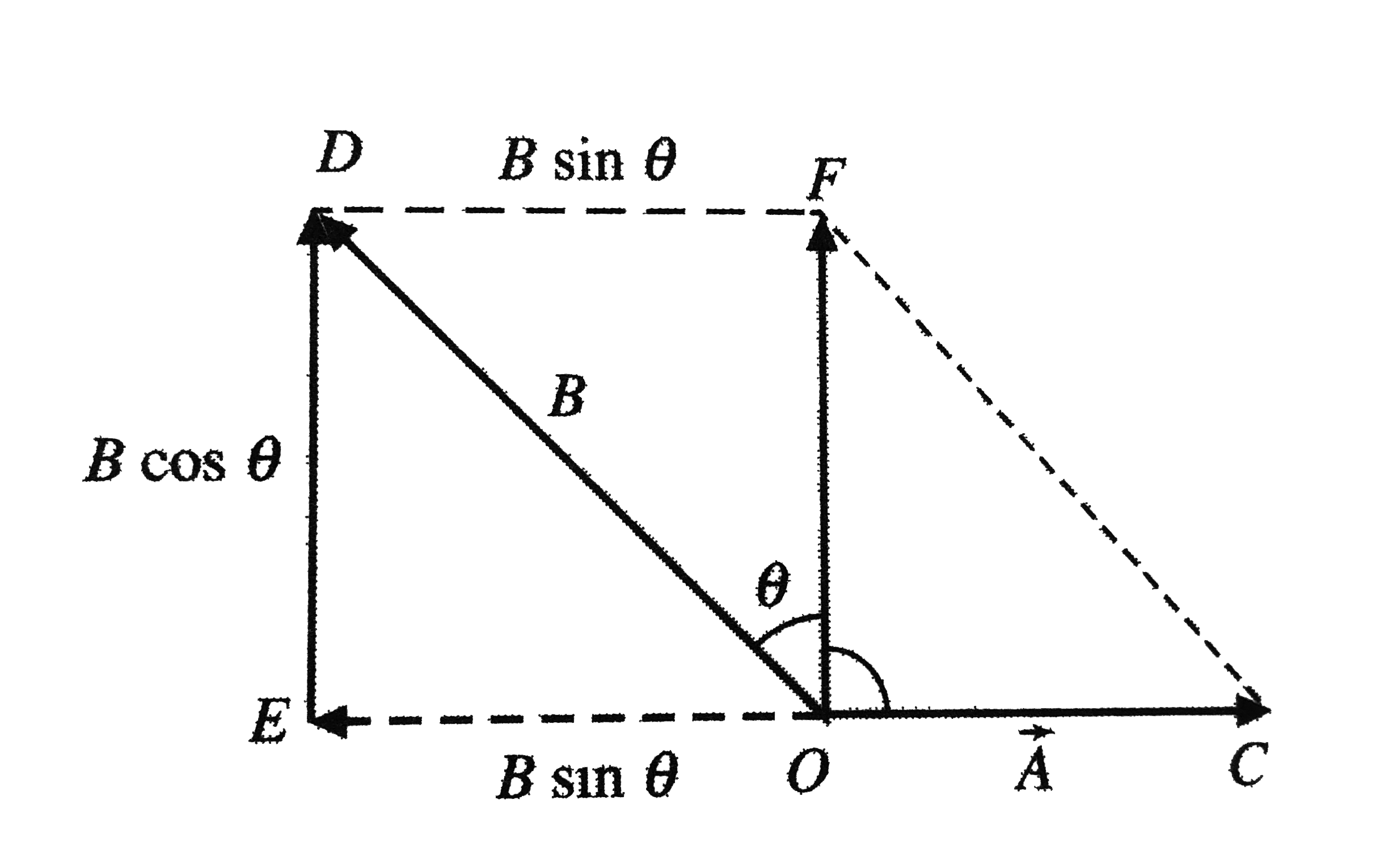The resultant of two vectors →Aand→Bis perpendicular to →A. Magnitude of Resultant →R is equal to half magnitude of →B . Find the angle between →A and →B?
To solve the problem step by step, we will follow the reasoning laid out in the video transcript.
Step 1: Understand the Problem
We have two vectors, →A and →B, and we know that the resultant vector →R is perpendicular to →A. The magnitude of →R is equal to half the magnitude of →B. We need to find the angle θ between →A and →B.
Step 2: Set Up the Equation for the Resultant
The magnitude of the resultant vector →R can be expressed using the formula:
|→R|=√|→A|2+|→B|2+2|→A||→B|cos(θ)
Given that |→R|=12|→B|, we can substitute this into the equation:
12|→B|=√|→A|2+|→B|2+2|→A||→B|cos(θ)
Step 3: Square Both Sides
To eliminate the square root, we square both sides:
(12|→B|)2=|→A|2+|→B|2+2|→A||→B|cos(θ)
This simplifies to:
14|→B|2=|→A|2+|→B|2+2|→A||→B|cos(θ)
Step 4: Rearranging the Equation
Rearranging the equation gives:
|→A|2+|→B|2+2|→A||→B|cos(θ)−14|→B|2=0
This can be simplified to:
|→A|2+(1−14)|→B|2+2|→A||→B|cos(θ)=0
|→A|2+34|→B|2+2|→A||→B|cos(θ)=0
Step 5: Use the Perpendicular Condition
Since →R is perpendicular to →A, we can use the dot product condition:
→A⋅→R=0
This implies:
|→A||→R|cos(ϕ)=0
where ϕ is the angle between →A and →R. Since →R is perpendicular to →A, ϕ=90∘.
Step 6: Using the Sine Rule
From the triangle formed by →A, →B, and →R, we can use the sine rule:
sin(π−θ)=|→R||→B|
Substituting |→R|=12|→B|:
sin(π−θ)=12|→B||→B|=12
Thus:
sin(π−θ)=12
Step 7: Solve for θ
Since sin(π−θ)=12, we have:
π−θ=π6⟹θ=π−π6=5π6
Final Answer
The angle θ between →A and →B is:
θ=5π6 radians or 150∘
We have two vectors, →A and →B, and we know that the resultant vector →R is perpendicular to →A. The magnitude of →R is equal to half the magnitude of →B. We need to find the angle θ between →A and →B.
The magnitude of the resultant vector →R can be expressed using the formula:
|→R|=√|→A|2+|→B|2+2|→A||→B|cos(θ)
Given that |→R|=12|→B|, we can substitute this into the equation:
12|→B|=√|→A|2+|→B|2+2|→A||→B|cos(θ)
To eliminate the square root, we square both sides:
(12|→B|)2=|→A|2+|→B|2+2|→A||→B|cos(θ)
This simplifies to:
14|→B|2=|→A|2+|→B|2+2|→A||→B|cos(θ)
Rearranging the equation gives:
|→A|2+|→B|2+2|→A||→B|cos(θ)−14|→B|2=0
This can be simplified to:
|→A|2+(1−14)|→B|2+2|→A||→B|cos(θ)=0
|→A|2+34|→B|2+2|→A||→B|cos(θ)=0
Since →R is perpendicular to →A, we can use the dot product condition:
→A⋅→R=0
This implies:
|→A||→R|cos(ϕ)=0
where ϕ is the angle between →A and →R. Since →R is perpendicular to →A, ϕ=90∘.
From the triangle formed by →A, →B, and →R, we can use the sine rule:
sin(π−θ)=|→R||→B|
Substituting |→R|=12|→B|:
sin(π−θ)=12|→B||→B|=12
Thus:
sin(π−θ)=12
Since sin(π−θ)=12, we have:
π−θ=π6⟹θ=π−π6=5π6
The angle θ between →A and →B is:
θ=5π6 radians or 150∘
Similar Questions
Knowledge Check
If ∣∣→A×→B∣∣=→A.→B then the angle between →Aand→B is :
A0Bπ4Cπ2Dπ
The resultant of →A and →B is perpendicular to →A. What is the angle between →A and →B ?
View SolutionTwo vectors →Aand→B have equal magnitudes.If magnitude of (→A+→B) is equal to n times of the magnitude of (→A−→B) then the angle between →Aand→B is :-
View SolutionIf →A+→B=→R and 2→A+→B s perpendicular to →B then
View SolutionThe vectors →A has a magnitude of 5 unit →B has a magnitude of 6 unit and the cross product of →Aand→B has a magnitude of 15 unit. Find the angle between →Aand→B.
View SolutionThe vectors →A has a magnitude of 5 unit →B has a magnitude of 6 unit and the cross product of →Aand→B has a magnitude of 15 unit. Find the angle between →Aand→B.
View SolutionIf →a,→b are unit vectors such that the vector →a+3→b is peependicular to 7→a−→band→a−4→b is prependicular to 7→a−2→b then the angle between →aand→b is
View SolutionThe two vectors →A and →B are drawn from a common point and →C=→A+→B. Then, the angle between →A and →B is
View Solution


 .
.